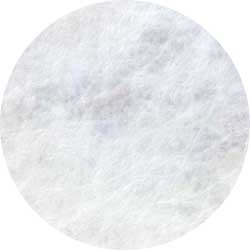What is Tyvek?
Tyvek is an entirely synthetic material made from very dense polyethylene fibres that are held together by a thermal process, producing a non-woven fabric. It is lightweight, durable, breathable and water-resistant. This material is designed and distributed by the American company DuPont.
It has a wide range of uses, including medicine, construction, fashion, security and product packaging.

The main characteristics of Tyvek material
- Tyvek is a breathable fabric. It allows water vapour to escape while preventing water from penetrating the fibres.
- It is highly resistant to chemicals.
- Very difficult to tear with the hands or by pressure, it is on the other hand relatively easy to cut with a knife, scissors or any other sharp tool.
- It is opaque, very light and flexible.
- It can be heat-sealed.
- It is 100% recyclable and reusable.
- It is easy to paint or customise by printing.
Uses of Tyvek and objects made from it
- Labels and signs.
- School and toiletry bags.
- Waterproof covers and blankets to allow condensation to drain away.
- Lightweight signs and billboards.
- Wristbands for festivals, events, clubs, hotels etc.
- Packaging for sterile medical products and suits for controlled environments (personal protective equipment).
- Preservation of historical documents.
- Envelopes.
- Coats and jackets.
- Footwear.
- Food protection.
- Decoration and handicrafts.
The advantages of Tyvek
As mentioned above, Tyvek is a unique material on the market. It is very strong yet light, water-resistant, recyclable and can be printed in high quality.
Thanks to these characteristics and their combination, excellent quality products can be designed.
The material has many advantages, some of which have already been mentioned.
To the touch, for example, Tyvek feels very much like paper, despite being an entirely different material that is stronger, lighter and more flexible.
It is also water-resistant, breathable and highly durable. What's more, it's 100% recyclable and easy to print. Finally, this material offers optimum value for money.
The best marking techniques for Tyvek
At Promotionice, this material is mainly used to make personalised wristbands. Tyvek wristbands are generally marked using tampography and digital printing techniques.
Tampography
This marking technique is chosen by many companies for the quality of the print and its low cost. It can be used on concave, cylindrical and irregular surfaces.
It is ideal for marking small objects because the result is better quality and more precise. It is a technique that does not require major investment.
UV printing
This personalisation method uses ultraviolet light to dry the colours. The result is high-quality, long-lasting printed Tyvek. What's more, a wide variety of colours can be used.
Its low cost and fast turnaround make UV printing an economical method of personalisation.
Conclusion
Tyvek is a material which, because of the advantages and characteristics mentioned above, is increasingly used in many fields. It is a durable material at a relatively affordable cost.
In addition, the fact that marking on this type of material is also very cheap is a great advantage, because with so many applications, many different products can be mass customised at relatively low cost.
